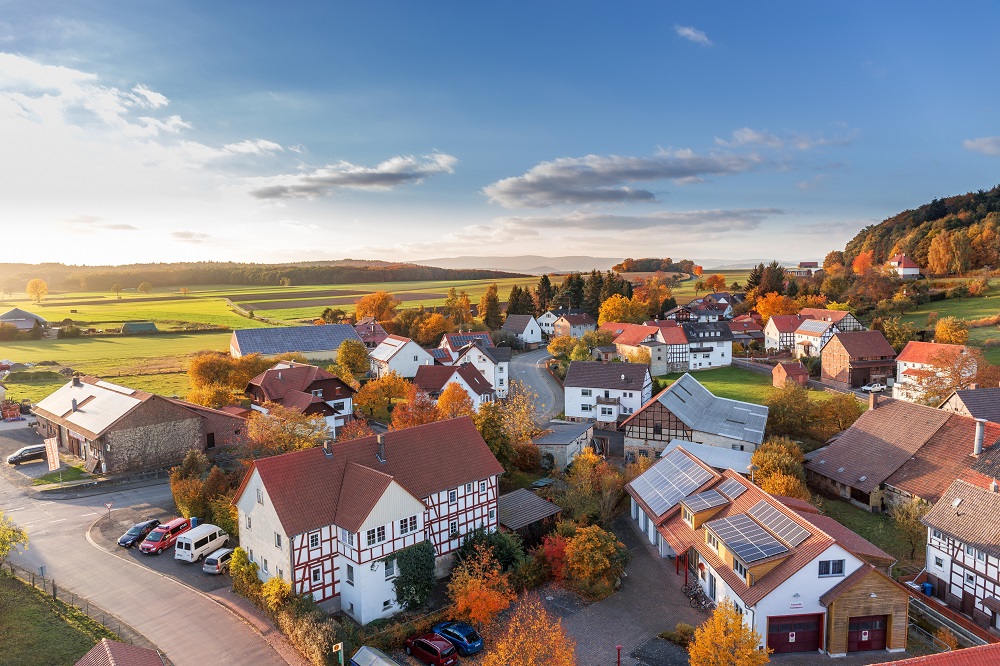
The rise of sustainable housing isn't just a fleeting trend; it's a fundamental shift driven by pressing global and personal needs. It matters profoundly for multiple interconnected reasons:
1. **Environmental Imperative:**
* **Reduced Carbon Footprint:** Buildings (both residential and commercial) are major contributors to greenhouse gas emissions, primarily through energy consumption for heating, cooling, lighting, and appliances, as well as embodied carbon in construction materials. Sustainable housing minimizes this through energy efficiency (better insulation, efficient HVAC, LED lighting), renewable energy integration (solar panels), and the use of low-carbon materials.
* **Conservation of Natural Resources:** Sustainable homes often incorporate recycled, reclaimed, or rapidly renewable materials (like bamboo). They also focus on water conservation through low-flow fixtures, rainwater harvesting, and drought-resistant landscaping (xeriscaping).
* **Waste Reduction:** Green building practices emphasize minimizing construction waste and designing for durability, adaptability, and eventual deconstruction or recycling (circular economy principles).
* **Biodiversity Protection:** Sustainable site planning avoids sensitive ecosystems, minimizes impervious surfaces to manage stormwater runoff, and may incorporate native landscaping to support local wildlife.
2. **Economic Benefits:**
* **Lower Operating Costs:** This is a major driver for homeowners. Energy-efficient designs and appliances drastically reduce monthly utility bills. Water-saving features also lead to ongoing savings.
* **Increased Property Value:** As awareness and demand grow, sustainable homes are increasingly seen as desirable assets. Features like solar panels, energy efficiency ratings (like LEED, Energy Star), and durable materials can enhance resale value and attract eco-conscious buyers.
* **Job Creation:** The green building sector creates jobs in manufacturing, installation, design, and construction related to insulation, solar panels, efficient windows, sustainable materials, and green building consulting.
* **Resilience:** Homes designed for sustainability often incorporate features that make them more resilient to climate impacts, such as better insulation in extreme temperatures, elevated foundations in flood-prone areas, or backup power systems, potentially reducing long-term repair costs.
3. **Health and Well-being:**
* **Improved Indoor Air Quality:** Sustainable homes prioritize ventilation and use materials with low or zero volatile organic compounds (VOCs), reducing pollutants that can cause respiratory issues and allergies.
* **Natural Light and Connection to Nature:** Designs often maximize natural daylight and incorporate views or access to outdoor spaces, which are proven to boost mood, productivity, and overall well-being.
* **Quiet and Comfortable Living:** Better insulation and sealing not only save energy but also reduce outside noise pollution, creating a quieter, more comfortable indoor environment.
* **Use of Non-Toxic Materials:** Choosing materials free from harmful chemicals contributes to a healthier living environment for occupants.
4. **Social and Community Benefits:**
* **Addressing Climate Change:** Individual homes are part of a larger picture. Widespread adoption of sustainable practices significantly contributes to national and global climate goals.
* **Promoting Equity:** While currently sometimes more expensive upfront, efforts are underway to make sustainable housing more accessible and affordable, recognizing that environmental benefits shouldn't be limited to wealthier individuals. Green buildings in communities can also improve local air quality and provide green spaces.
* **Educational Value:** Sustainable homes serve as examples and educational tools, raising awareness about environmental issues and resource consumption.
**Why the Rise Now?**
* **Growing Environmental Awareness:** Public understanding of climate change and environmental degradation is higher than ever.
* **Technological Advancements:** Energy-efficient technologies (LEDs, heat pumps, smart thermostats) and renewable energy systems (solar panels, battery storage) have become more effective and cost-competitive.
* **Stricter Regulations:** Building codes are increasingly incorporating energy efficiency and sustainability requirements.
* **Market Demand:** Homebuyers, especially younger generations, are actively seeking healthier, more efficient, and environmentally responsible homes.
* **Economic Incentives:** Government tax credits, rebates, and grants often encourage the adoption of sustainable features.
In conclusion, the rise of sustainable housing matters because it offers a necessary path towards mitigating climate change, conserving precious resources, creating healthier living environments, delivering long-term economic benefits, and building more resilient communities. It represents a crucial evolution in how we design, build, and live in our homes.
